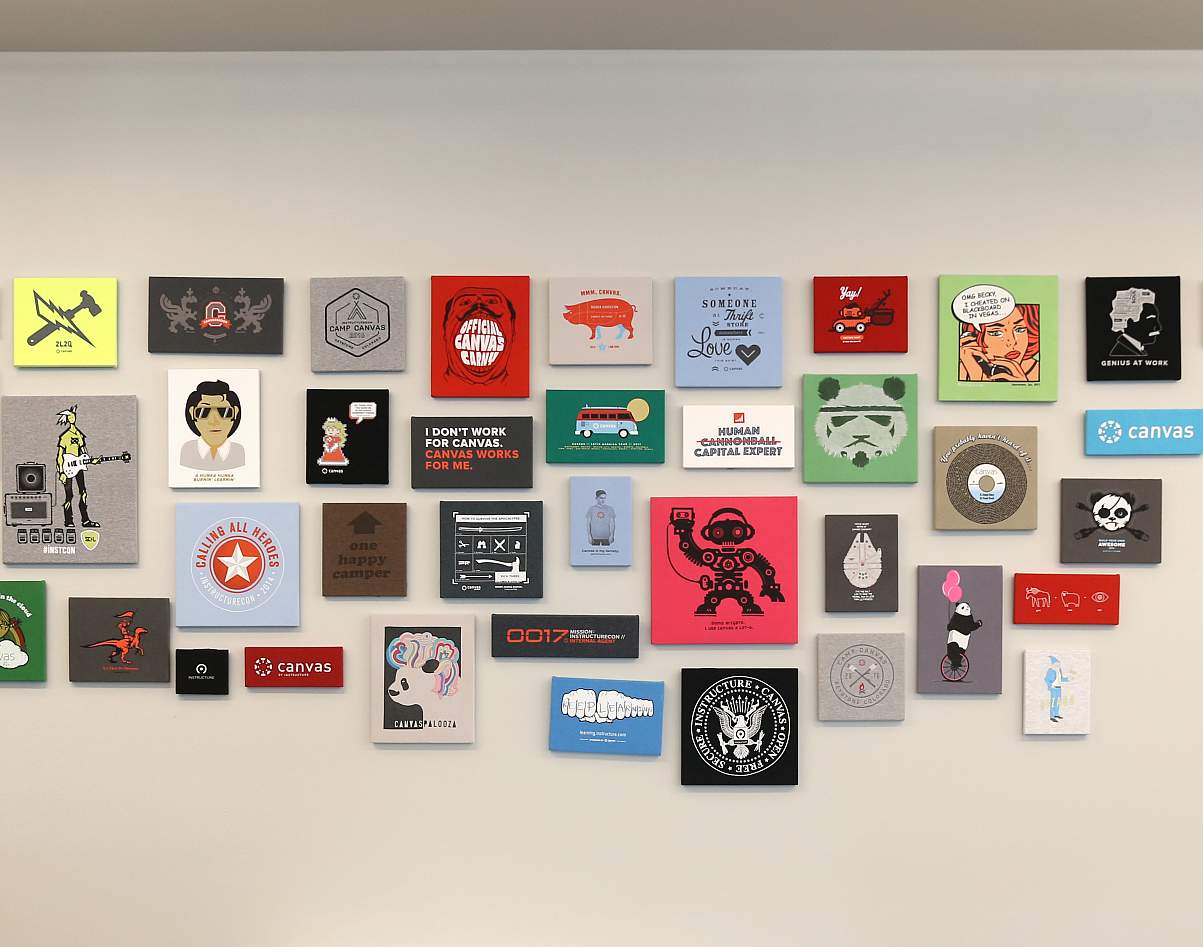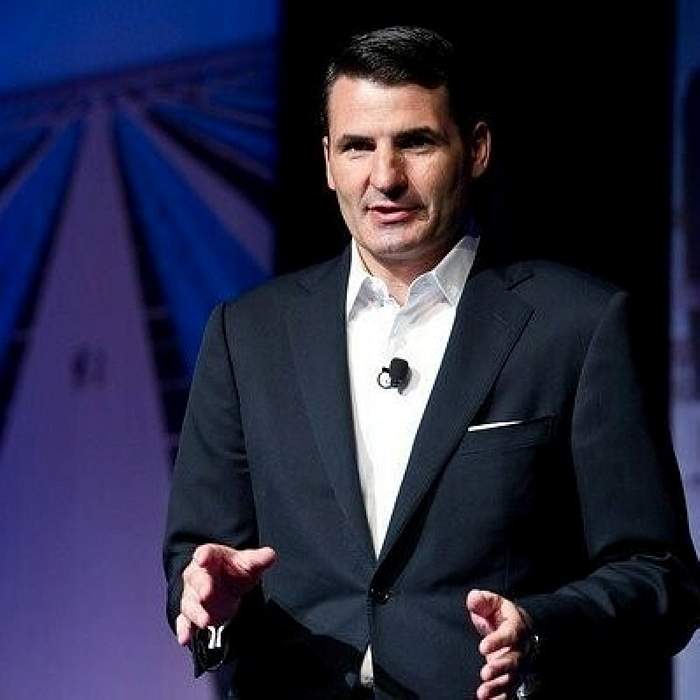
Chris Ball Discusses Why He Joined Instructure
By Elainna Ciaramella and Mark Tullis
In January, Adobe’s former general manager for Commercial Business for the Americas (US, Canada and LATAM), Chris Ball, emerged from retirement to join Cottonwood Heights-based Instructure as president and chief operating officer, as mentioned in TechBuzz. We caught up with Ball recently to learn his reasons for ending his brief retirement, and why Instructure was his company of choice.
Ball said if you wind the tape all the way back to the beginning, he’s probably the most unlikely person in the world to be president and COO of Instructure, a Utah-based education technology company that has redefined the learning management system market with its ground-breaking and wildly popular LMS, Canvas. By “most unlikely person,” he was referring to back when he was an inspiring novelist living in Manhattan.
“The girl who was dating me at the time was much smarter than me,” Ball says. She said, “Chris, you may want to find a backup plan.”
She explained, “Look, you love to read and write, so why don’t you go to law school?” As law school could hone his communication skills, she convinced Ball to go. “What she didn’t tell me was that when you go to law school, the creative side of your brain goes into full atrophy,” Ball says. “And that’s exactly what happened to me.”
 When he graduated law school, Ball said he completely lost his creative voice. He joined a very small startup, a pre-revenue software company as general counsel and fell in love with what startups could do. Before they knew it, they were a $200-million-dollar company that had a very successful IPO.
When he graduated law school, Ball said he completely lost his creative voice. He joined a very small startup, a pre-revenue software company as general counsel and fell in love with what startups could do. Before they knew it, they were a $200-million-dollar company that had a very successful IPO.
Ball was not only the startup’s general counsel, but he also ran business development and product management. He had to make a decision—he could be a lawyer or a businessman, but not both. “I made the fateful decision that I was going to be a businessman,” Ball says.
Ball got a call from a friend of his in Palo Alto, California in the mid 1990s. His friend said, “Dude, they’re giving away money out here and it’s 80 degrees.” Ball was living in New York at the time. It was 30 degrees in November. Ball flew to Palo Alto and the pair spent the weekend putting together 15 slides.
“We went up to Sand Hill Road and after a week, we raised $11 million dollars. And I remember saying to my friend, ‘Do they realize that we only have 15 slides? We don’t even have a computer. We don’t have a single employee. We have nothing.’ His friend reassured him: “That’s the way it happens here.”
They picked up and moved to Palo Alto, started a company, which got acquired. “When you make venture capitalists money, they put you at other companies,” Ball says. “So, I was at a number of startups. Some were very successful and had exits, some failed, but they went fast and that’s kind of the way it was,” he says.
Ball found himself acquired into a German multinational software company company, SAP Software Solutions, that has been around since the early 1970s. At the time the company was doing about $50 billion dollars in revenue, had 250,000 customers, and 75,000 employees.
“I’m the startup guy now at this big company and I was like, ‘I’m going to last about five minutes here,’ but I started to see they had been around for 40 years, an eternity in the tech industry. I saw that they were global, they did every industry, and they did every segment of the market,” Ball says.
Ball had seen growth, but he’d never seen scale like that before. “I stuck around because I thought I could learn something.” Ball had been at SAP for about a year when Bill McDermott him him and said, “We’ve been watching you and we want you to run a $3-billion-dollar-business for us.”
In disbelief, Ball responded, “I think your assistant called the wrong Chris because I’m wholly unqualified to run that business,” and McDermott said something to Ball he’ll never forget: We believe in you. You’ll find your wings on the way to the ground.” Ball said it was a “profound statement” that stuck with him forever.
The next thing Ball knows, he’s been at SAP for 14 years, over which time Ball ran a variety of businesses for SAP—all in the billions, multiple sizes, global organizations, and North American organizations. “I just had a wonderful time there learning how to build and grow businesses and I took notes.”
Ball left SAP after 14 years and went into venture capital. “I joined Lightspeed Venture Partners, a great early-stage investor, maybe one of the premier early-stage firms.” It was at a time when they were trying to build their SaaS practice, which they didn’t have a lot of experience in.
“Over four years, I got to see hundreds of SaaS and cloud companies of all shapes and sizes. I got to see a lot of the common struggles they all had, but then I realized as much as I loved advising and sitting on boards, I missed leading people, which is really my passion.”
 Ball decided to go operational again. He got a call from Adobe, which he had known well from his SAP days. Ball knew Matt Thompson, the president who tragically passed away recently. The team at Adobe said to Ball, “Adobe is on a journey,” one that’s very similar to where Instructure is now, according to Ball.
Ball decided to go operational again. He got a call from Adobe, which he had known well from his SAP days. Ball knew Matt Thompson, the president who tragically passed away recently. The team at Adobe said to Ball, “Adobe is on a journey,” one that’s very similar to where Instructure is now, according to Ball.
“Adobe was originally a consumer company and now they’ve moved into the enterprise space,” Ball says. They wanted to move from an on-prem company to a cloud company, which is a journey Ball took at SAP. “They [Adobe] wanted to move from a single-product company, Omniture, to a platform company selling a variety of applications into a number of markets.”
Ball says Adobe grew 30 or 40 percent every year and they transformed that organization. “I’m really proud of my time at Adobe.” Ball ran the Americas and then the pandemic hit, and he found himself where he had the luxury of being able to retire, or so he thought…
“During the pandemic, I wanted to spend more time with my family. I hadn’t seen them in 30 years—I’ve been on an airplane. My wife wanted to move to the Hallmark Channel, so we bought a house in Maine. I have a house in California and Maine, and I thought I was happily retired. Then Instructure came knocking.”
Ball told TechBuzz that again, he found himself missing people. Once he retired, he found he missed leading people, and he missed having access to a population of people who he could help make better.
“I missed paying forward what Bill McDermott did for me, looking at people and seeing something in them that they didn’t see in themselves, and giving them the opportunity to find their wings on the way to the ground,” he says. “There were a number of very large roles at some prominent companies, but ultimately, I chose Instructure as the place where I really wanted to go—when you look at my career, when I go places, I stay for a long long time.”
Why did Ball choose Instructure? Ball said that when he first looked at Instructure, it was a half-billion-dollar, profitable, native-cloud company. “Those are rare, but that alone would have been great, right?” says Ball.
 “I looked at this company over the last three years, facing a global pandemic, facing a takeover by a private equity company, facing a go private, and then reentry into the public market—all of which could destroy or cripple a company—I saw this company double its size during all that. It said to me, "this is a really resilient company,” and resiliency matters as you’re trying to grow.”
“I looked at this company over the last three years, facing a global pandemic, facing a takeover by a private equity company, facing a go private, and then reentry into the public market—all of which could destroy or cripple a company—I saw this company double its size during all that. It said to me, "this is a really resilient company,” and resiliency matters as you’re trying to grow.”
Ball looked further and he thought, “As much as it’s a great technology company, Canvas is category killing. It is the premier flagship LMS solution on the planet. But as much as the company is about technology, what I found with my journey with them was—it’s about the people. The people at Instructure really cared. Many of them were former educators, former administrators—they cared about each other, about their customers in a way that’s rare.”
Ball said then it got better because Instructure has 7,000 customers in over 100 countries and these customers love Instructure—they root for the company. “The relationships I see with our customers—they hug our employees. It feels more like a Grateful Dead concert than it does like a customer conference when you’re with us.
According to Ball, many of the other companies he was talking to were focused on optimizing the supply chain or making HR better, but Instructure was different. “This was a mission like, ‘How do we transform education? How do we enable educators and learners to be the best version of themselves and achieve their dreams? How do we radically transform education?’”
As a father of children who went through high school during the pandemic, this mattered to Ball. He chose Instructure because it’s a great company with great people, great technology, great economics, but also a mission that matters. “Those are rare,” says Ball.
But what about the educational tech sector having its unique sales challenges? Instructure has gone from half a billion to two billion in the EdTech sector—since it’s separate from the public sector, it has its own idiosyncrasies due to highly-regulated sales cycles, comparatively slow ones at that. In other words, taxpayer dollars are Instructure’s funding source, which has state agencies highly regulating those dollars.
Ball said those structural realities are real, and they certainly deal with them every day, but the pandemic was really interesting. “What we saw was an acceleration of many institutions, whether it be K-12 or higher education, really thinking about what their place in the world was, what their relationship with their learners was going to be like and how they need to evolve,” Ball explained.
In many ways, it was a catalyst and made a lot of universities, which had probably not planned to do many of these things, like go online—it accelerated those decisions, Ball said.
“What we're also seeing is that the world of education is changing. I think education will be disrupted from the outside as opposed to from the inside because it's not been a sea of disruption internally. But what you're seeing is in the traditional days, you would have a K-12 path that many people would have a higher education path, whether it be a four years or go on to a graduate afterwards.
“More and more people in the world today are saying, ‘I'm not sure a degree makes sense for me anymore.’ It might be that the journey of life is about acquiring skills and credentials and it's a lifelong journey, and that needs to be documented.
 “It's almost like the COVID card for your skill sets, a place where you can have all of the credentials and you'll see employers. LinkedIn has announced it, Microsoft has announced it, my old employer SAP has announced it, that they're moving away from degree based hiring and they're moving to skill-based hiring,” Ball says.
“It's almost like the COVID card for your skill sets, a place where you can have all of the credentials and you'll see employers. LinkedIn has announced it, Microsoft has announced it, my old employer SAP has announced it, that they're moving away from degree based hiring and they're moving to skill-based hiring,” Ball says.
What that means is part of the reason Instructure is expanding its platform and bringing all these new solutions is they’re trying to help all of these organizations deal with the new realities of what the world is going to look like and where it's going, Ball said. Much of it is here now, and some of it is in the near-term and some is a little further out.
Ball read an analyst report recently that said they thought that 30 to 40% of higher ed institutions might go out of business within the next 10 years. According to Ball, what you're finding is that many universities are going to have to compete for students, they're going to have to compete for alternative paths, for trade programs and other things.
As that need for competitive advantage comes, that's going to drive innovation within a lot of these institutions, and that's the place we see for us, the point of a learner is not to get a degree, but the point of learning, Ball explained.
“Education is to have an outcome so they can go live a very fulfilled and happy life doing something hopefully that they love, something they're well-compensated for, so that they can go on and have a life that's meaningful. That's really where we see the world going, and that's part of the reason for Instructure’s evolution.”
Ball said that sometimes, learning is accidental, and not surprisingly, Instructure thrived during the pandemic. “I think because all of a sudden, it was thrust upon many, especially universities, but also K-12, that if they hadn’t been online yet, they needed to get online pretty fast during the pandemic.”
During the pandemic, Instructure had such a high volume of business just because so many institutions needed to get something done right. And so Instructure was so busy with that flywheel—they couldn’t fulfill fast enough because there was so much demand.
“When we were able to look back and make some observations about the market dynamics that forever changed schools, and you didn’t see the impact until two or three years later. I think the pandemic rose to the surface a lot of things. Was it the testbed? I think it was an accelerant.”









